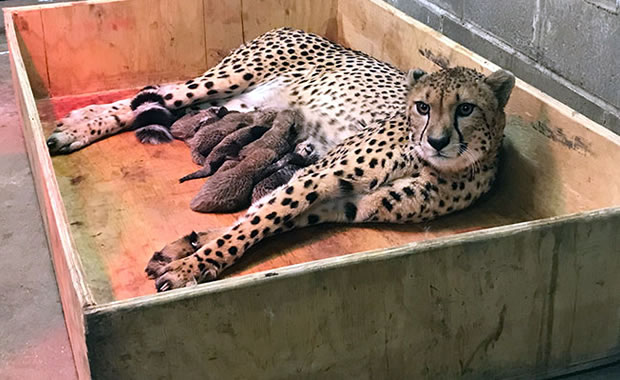
Eurasian Peregrine Falcon
© Eyal Bartov |
Creature Profile
The Eurasian peregrine falcon is one of the many subspecies of the peregrine falcon. They are mainly non-migratory and are found only in western Eurasia. The peregrine falcon is a raptor or bird of prey. Most peregrine falcons are around 12 to 18 inches in body length. Like many birds, the females are much larger than the males. Peregrine falcons vary in color according to subspecies, but they generally have a bluish-black head and wings (upper), and their underparts are usually pale with spots or barred markings.
Peregrine falcons eat mostly birds which are caught in flight and killed by a hard blow with its claws rolled into a fist. Their diet also includes small mammals, reptiles, and insects. These birds can fly very fast reaching speeds of 120 miles per hour during descent (stoop). Nesting occurs on cliff ledges and sometimes in old nests of other birds like crows. Mothers lay from two to five eggs and they are mostly incubated by the mother for around 32 days. The parents take care of the young for several weeks after they hatch. The young become mature at around three years of age. Some peregrine falcon subspecies migrate, but the Eurasian peregrine falcon is a year-round resident in its Eurasian habitat.
The peregrine falcon species has suffered greatly as a whole because of toxic effects of insecticides such as DDT and dieldrin. High exposures of these toxins effect their ability to reproduce. These birds also suffer because of the sport of falconry and some young falcons are even illegally taken from their nests. Pigeons are one of the main prey items of the peregrine falcon, and therefore some falcons are shot down by pigeon-lovers who consider them pests. In efforts to save the peregrine falcon species, conservationists in North America are constantly monitoring the peregrine population and all of its subspecies and the quality of their habitat.
More Links about the Eurasian Peregrine Falcon:
Reference Links:Peregrine Falcon - Wikipedia.com
Conservation Links:
Peregrine Fund
September 23, 2013
Glenn, C. R. 2006. "Earth's Endangered Creatures - Eurasian Peregrine Falcon Facts" (Online). Accessed 4/16/2024 at http://earthsendangered.com/profile.asp?sp=144&ID=6.
Need more Eurasian Peregrine Falcon facts?




